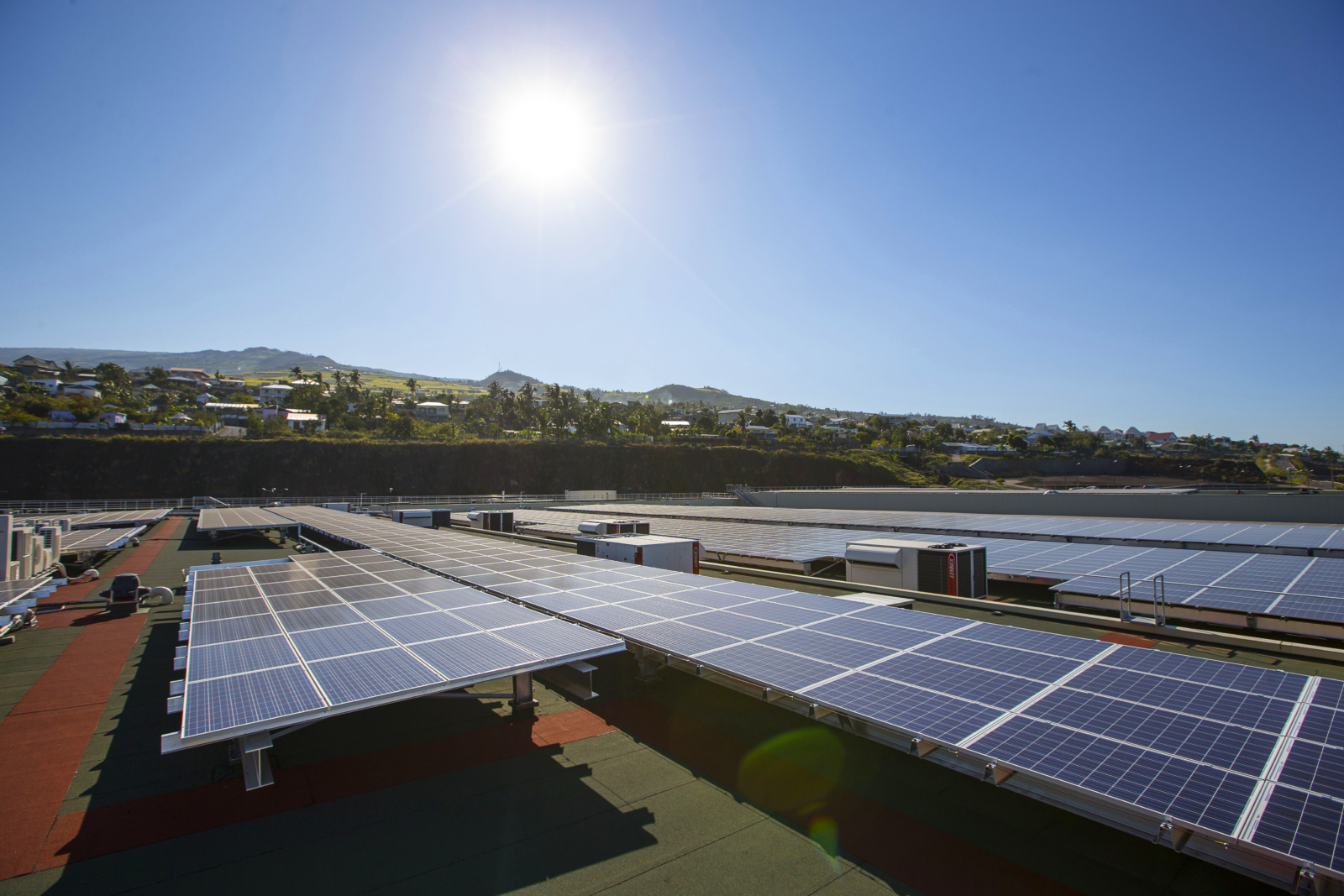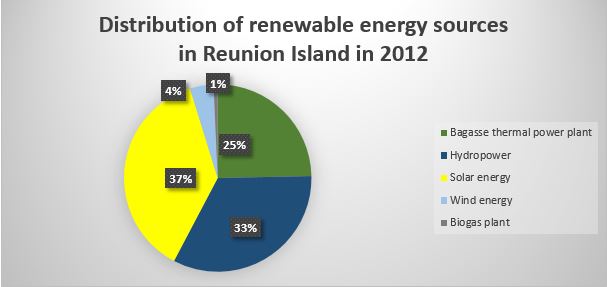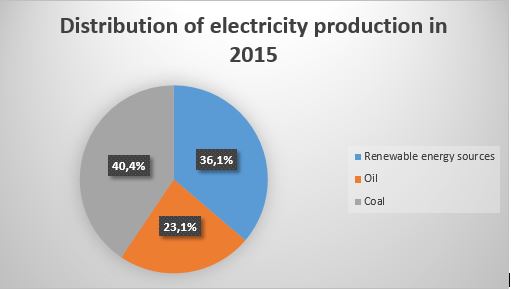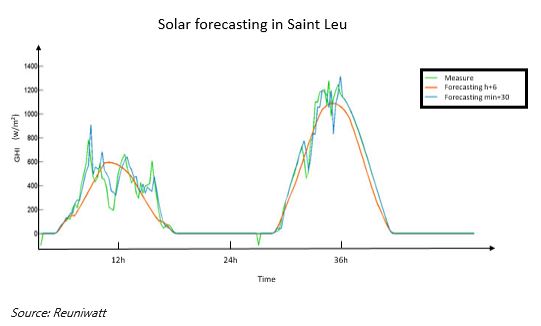Reunion Island, like most insular regions, is ruled by a carbon economy which is heavily dependent on oil, imported by sea. But in recent years, the energy transition has become the watchword of these non-interconnected areas. This results into an increasing implementation of renewable energy sources (RES) in these regions.
In 2012, this island of the southwest Indian Ocean had a renewable electricity production capacity of 34.6%, with 17% from hydroelectricity and a significant share of solar energy (7.6%).
These last years, with the new law on energy transition and a local multi-annual programming on energy, Reunion Island is being pushed towards an ambitious goal: to increase its share of renewables to 50% in its electricity production by 2020 and to 100% in 2030.
The evolution of the energy mix of this overseas region is already noticeable.
This increase in the share of RES is mainly due to the strong growth of the photovoltaic sector. The solar capacity has increased by 44% between 2011 and 2015 and now represents 8.5% of the electricity mix, with a production of 245 GWh.
It is interesting to underline the fact that Reunion Island has already exceeded the 30% limit rate (Ministerial Decree of 23 April 2008) of RES penetration into its electricity grid. This achievement is enabled by incorporating substantial storage systems coupled with PV plants, and intelligent management (Smartgrid) and control (forecast) of the grid.
We can here take the example of the Saint-Leu project (a shopping centre at Le Portail, Reunion Island). This site comprises rooftop solar panels coupled to a storage system. The requirements inherent to non-interconnected areas stipulate that any producer of photovoltaic energy is bound to respect a trapezoidal daily power profile, announcing the maximum power delivered. The company Albioma, owner of the near-1MW facility, selected Reuniwatt’s services to manage its production profile and its energy storage.
The graph below shows solar forecasts at different time horizons (6h and 30 min) on the 16th and 17th of November 2014. The forecasts, expressed in GHI (Global Horizontal Irradiance, which is a measure of sunshine per area unit (W /m²)), are superimposed on the real measures observed subsequently.
Then, these data are integrated into Albioma’s Energy Management System (EMS). This is the management information system of the PV plant and batteries, which carries out the necessary analyses to inject the required power profile into the grid.
Some feedback from the use of Reuniwatt’s forecasts in non-interconnected areas:
- Reuniwatt’s experience and technology have helped to adapt to complex weather conditions characteristic to island regions. The use of specific methods has been developed, in particular to forecast redundant cloud formations.
- A positive feedback noted by the custome, with a valuation of the PV output up to 95% (against 88% for the standard forecast).
- A high-quality performance with an availability in the data supply greater than 99.5%.
- A Permanent monitoring that enables continuous performance improvement, namely 20% on average the first 6 months thanks to machine learning.
Finally, this overseas region does not stop there and plans a substantial increase in its renewable sector for the coming years:
The objectives are clear: double the island’s PV capacity by 2018 to reach a 30% rise in electricity production capacity by 2023.
Thus, the energy transition of non-interconnected islands paves the way for the accelerated adoption of renewable energy sources. Reunion Island, regarded for years as a recognized experimental territory for RES, is in line to move towards the status of producer of wealth and jobs, aiming at the implementation of innovative solutions with a global reach.
Photo credit: Albioma




